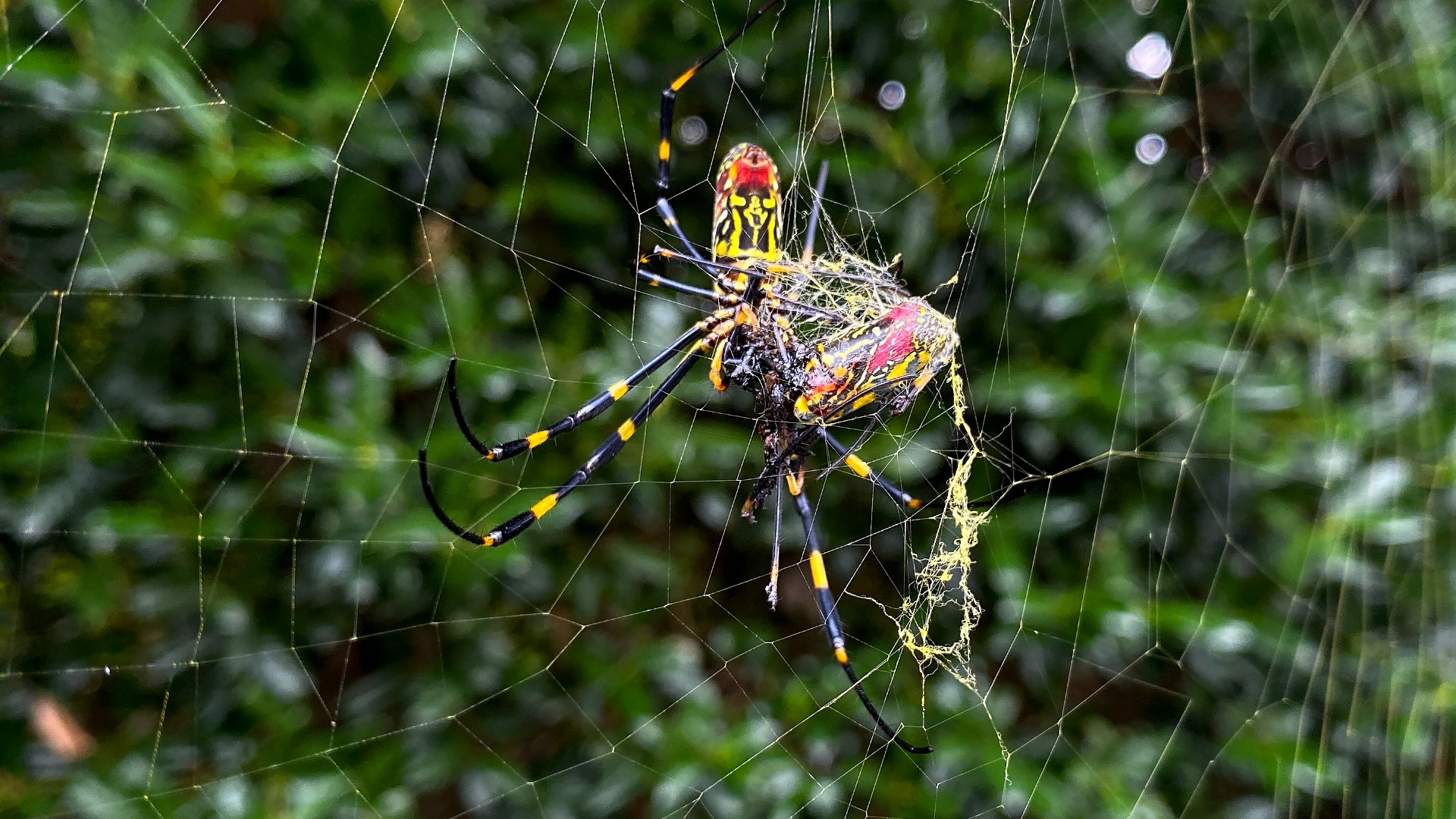ATHENS, Ga. — The Joro spider is not quite new to the U.S., but the invasive species may spread to other areas.
University of Georgia researchers are taking a closer look at the movements of the species. Experts have since discovered that the spiders have a higher probability of of surviving brief freezes, possibly allowing them to move up along the East Coast and colonize in colder climates.
"So, if it can survive in the northern reaches of Japan, we sort of figured that it would probably survive in the upper reaches of the U.S., things like the upper mid-Atlantic," UGA Odum School of Ecology research scientist Andy Davis told 11Alive.
Davis said that the species does not appear to be harmful or have much of an effect on the local ecosystem. He said the spiders have been beneficial to some native birds as an additional food source. Arachnophobes can also breath a sigh of relief, because their fangs are too small to break human skin.
"They are actually very, very timid. I've got some research ongoing in my lab right now looking at their behavior. And it turns out they're more timid than most of your native spiders," Davis said.
The Joro spider was first confirmed in Georgia back in 2015. The species can be identified by its large body, spanning nearly three inches long when extended, and their yellow and black stripes.
For now, Georgia residents will likely need to get used to their yellow and black spider neighbors, according to Davis.
"I think people are going to have to learn to appreciate spiders because this spider isn't going anywhere." He said.

